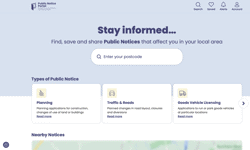As the world struggles to recover from near financial collapse, businesses and individuals alike are being forced to tighten their belts in ways unseen since the time of the Great Depression. On a daily basis, we hear stories of how organisations across the globe are being hit by the apparent lack of available credit in the banking system. We stand back in shock as our local High Street is unceremoniously stripped of the household names that in times past would have been frequented by our parents and grandparents.
Closer to our own hearts (yes publishers do have hearts!) is the unanswered question of “what is the next step for print publishing?” Around the globe, we are experiencing an unprecedented decline in print circulations, with advertising revenues mirroring the downward trend. So we look to publishing’s younger cousin, the website, for assistance in filling the corporate coffers. To our dismay, we find that the proliferation of free online content is putting the future of paid-for content in jeopardy. Combined with a slow-down in online advertising spend and you could be forgiven for suggesting that things are looking a little bleak.
Is it any real wonder then that with these pressures to contend with, publishers are looking to any viable advances in online communications technology with a degree of optimism and hope (possibly even desperation!). I refer, of course, to the use of social media (SM). Now, no doubt there are already many SM purists out there ready to brandish their iPhones in order to advise me in no uncertain terms that SM is not “new”. I hear your virtual cries, so please, lay down your touch screen, GPS, Wi-Fi, HSDPA mobile devices and let me contextualise this by saying that I am referring to the proliferation of SM in the last ten years or so, ok?
SM: friend of foe?
So, is SM “friend” or indeed “foe” to the traditional publisher? In conversations on this subject, time and time again the same questions emerge; “How can SM be monetised?”, “What’s the business model?”, or even a little more sceptically, “What’s the point, it’s a waste of time, isn’t it?” For many purists, the potential of SM reaches far beyond simply making money; it is about the synergies created through communities, information exchange, collaboration and much more. However, for the hard-nosed publisher this must equate to a contribution to the bottom line or what is the point, right? Hold that thought.
The often confusing aspect to SM is that at some point we have all been “poked” by an old school friend or indeed we have announced to the world via a “Tweet” that we are “grabbing a coffee at Café Costabucks” before starting our uniquely busy day. Our experience of the truly “social” aspect of social media therefore makes us question how this can possibly translate into something more meaningful for our readers and advertisers and, ultimately, to our publishing business. Perhaps it is understandable then why so many commentators liken some SM applications to shouting into a very large black hole, and suggest that it is about as interesting (and annoying!) as listening to someone in a quiet carriage on the 0707hrs train from Guildford to London Waterloo declaring loudly to their partner that they are “on the train now” and that “they’ll call again when they arrive at Waterloo”. Is it just me or...
So how can SM support and ultimately enhance your business’ goals and objectives? In many respects, the answer to this question is somewhat relative and depends on what you consider to be important. However, I’ll take a punt that selling more product, increasing readership and keeping costs to a minimum are amongst your aims. In all of these endeavours, SM will not only assist you, but, approached in the right way, could take your publishing business and its brands in a new direction.
Making money
Let’s explore the question of monetising social media for a moment. Now, the only caveat I would add at this juncture is that how effective this is for your business will depend heavily on the quality and depth of the online communities you establish. But you will notice that I did not say “size” of your community. Ultimately a small community of people that share in the same values and interests as your business are of greater value than a much larger group that do not engage with your content at all. A recent article by Robin Eggar in the Sunday Times demonstrates how this principle is already at work in the music industry. The headline reads, “You don’t need to sell a million to make a mint... web-savvy artists such as Kate Walsh and Tina Dico can do nicely with just 5,000 loyal fans” – very true.
So who is making money through SM? Well, for our inspiration we turn to the computer company Dell and its use of the micro-blogging site Twitter. Dell’s US Twitter presence (@DellOutlet) has been running since 2007 and regularly posts a mix of Twitter-exclusive offers, deals and updates. Since its inception, Dell has established an online following of over 1.4 million people, with direct sales from Twitter reported at $3 million (Reuters June ’09). Whilst $3m may be a relatively small amount of money to a company the size of Dell, it does clearly demonstrate that crafting an approach to SM in this way does pay off. A review of Dell Outlet’s posts on Twitter from the last two weeks shows a high-level of interaction with other Twitter users including answers to questions about stock items, warranty issues and upgrades, in addition to offering its users vouchers for sales promotions and links to limited offers. By interacting with its community in this way, Dell Outlet has avoided the common mistake of viewing SM as a medium through which to simply broadcast at its online community. SM demands two-way communication and as such participants do not want to simply be regarded as an audience, they expect to be part of a thriving community.
Building a community
“LinkedIn reaches 45 million users” (Techcrunch.com Aug ’09); we have all seen headlines in the press like this and we know that many of the users referred to in this mind boggling number would be the perfect consumers of our own content. But, as in this example, if we don’t author a LinkedIn group or we have little idea of how to build an online community, how do we go about getting ourselves known in this space and thereby attract new readers? Ultimately the answer to building a community is to develop a detailed sustainable social media strategy for your business. As I have limited space here, I will deal with a few of the networking basics and hope to return to this subject in the future.
Conventional wisdom suggests beginning by “listening” to existing SM groups that share your organisation’s interests. If you are not comfortable with creating new SM accounts straight away, you can keep abreast of who is posting content on your chosen topic or query via free online search tools such as Social Mention and Addict-o-matic. Both are easy to use and Social Mention provides a free customisable SM alert service akin to Google’s web alert service, Google Alerts.
As you become more comfortable with the various styles of language and different etiquettes used within SM, create accounts within the spaces that you feel best serve your business. You may decide to set up a blog as the centrepiece of your SM strategy, although this can come later. Personally for business purposes, I would recommend starting with the social networking site LinkedIn and the micro-blogging site Twitter, although advice about this differs. Once you have established your SM presence you can begin building a community. This involves finding like minded people and beginning to interact with them. This may take the form of commenting on other users’ content, inviting them to comment on your content, exchanging ideas / concepts (SM is a great place to ask questions, so don’t be afraid to), sharing information / links etc. Don’t be afraid to put others in the limelight, share with others what you know, show a human side and always remain courteous, helpful and supportive. Bear in mind that you are not the only person in the social media space with something interesting to say; it’s not just about you and users can easily tune out! Ultimately you are trying to create a valuable community so remember, it’s a two-way street; if you ask for feedback, be prepared to help others when they ask for yours.
A SM community will take time to build but don’t get frustrated. From the outset of establishing your SM presence, give your community a strong sense of what your specialist area is and how often they can expect to interact with you. By setting expectation levels, people know what to expect from you but ultimately that means an extra workload on your shoulders too, especially if you plan to establish yourself as a regular blogger. As your SM presence gathers pace, you will benefit from tying in your publishing schedule with your SM strategy to ensure that your resources are managed effectively. As your reputation and reach in the SM space grows, so will interest in you and your organisation’s products and services.
Managing your time
Using SM does take time, especially when first establishing a presence for your business. However, with the effective use of third-party applications, managing your SM presence need not be time consuming. Whilst some self-proclaimed social media “experts” claim to spend five hours per day and upwards on their SM efforts, a typical business can expect this to even out anywhere between 45-90 minutes per day (subject to the number of active SM accounts in use). Often by selecting a person in your company already in touch with modern blogging styles and techniques, this can significantly reduce administration time. Bear in mind that SM can have the effect of disarming even the most educated traditional marketer, so don’t assume they are the best suited to manage this task. That said, bear in mind that whether it is one or more people sharing the job of managing your SM accounts, you should establish a set of social media guidelines for all staff (there are many downloadable templates available free of charge from the internet).
What have we learnt on this whistle-stop tour of SM? We have observed that already emerging from the modern SM smelting pot are some very respectable sales figures. We also know that there are new readers that we can connect with through establishing and building solid SM communities. Finally, providing that we establish a coordinated publishing schedule and manage our time effectively, SM need not be an unnecessary drain on our resources.
But is SM any more than an additional marketing channel? In many ways, SM shares a number of the same objectives. However, unlike traditional marketing, SM is built upon the principle of two-way communication. As it develops, I think that we will see businesses start to put SM at the centre of their communications strategy where it will act as a live interface between company and consumer.
So, is SM “friend” or indeed “foe” to the traditional publisher? I think that we have demonstrated that SM has the potential to help publishers achieve many of their core objectives in the areas of sales, readership and keeping costs to a minimum. One important question remains though, why do so many publishers not yet have a coordinated sustainable social media strategy in place?










